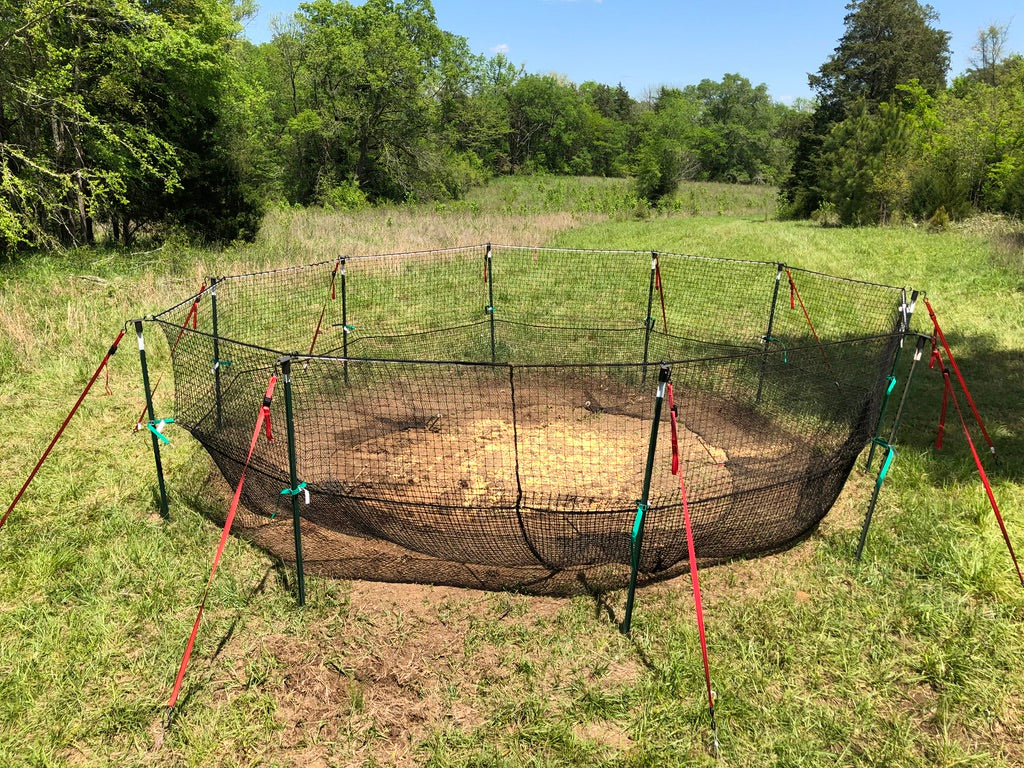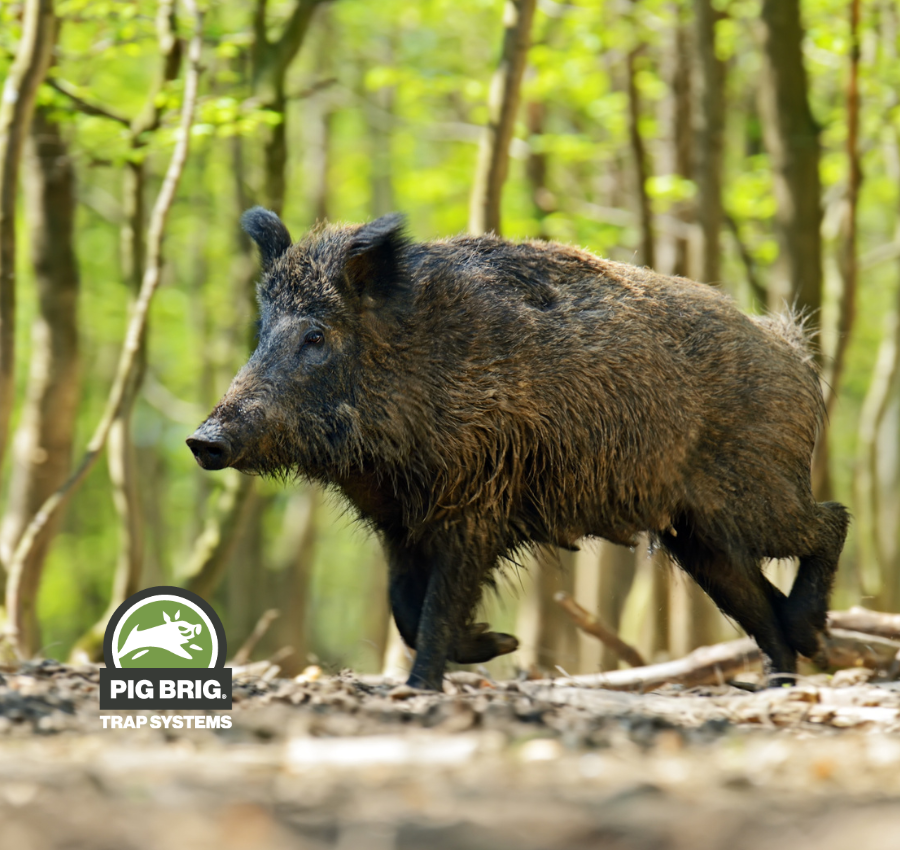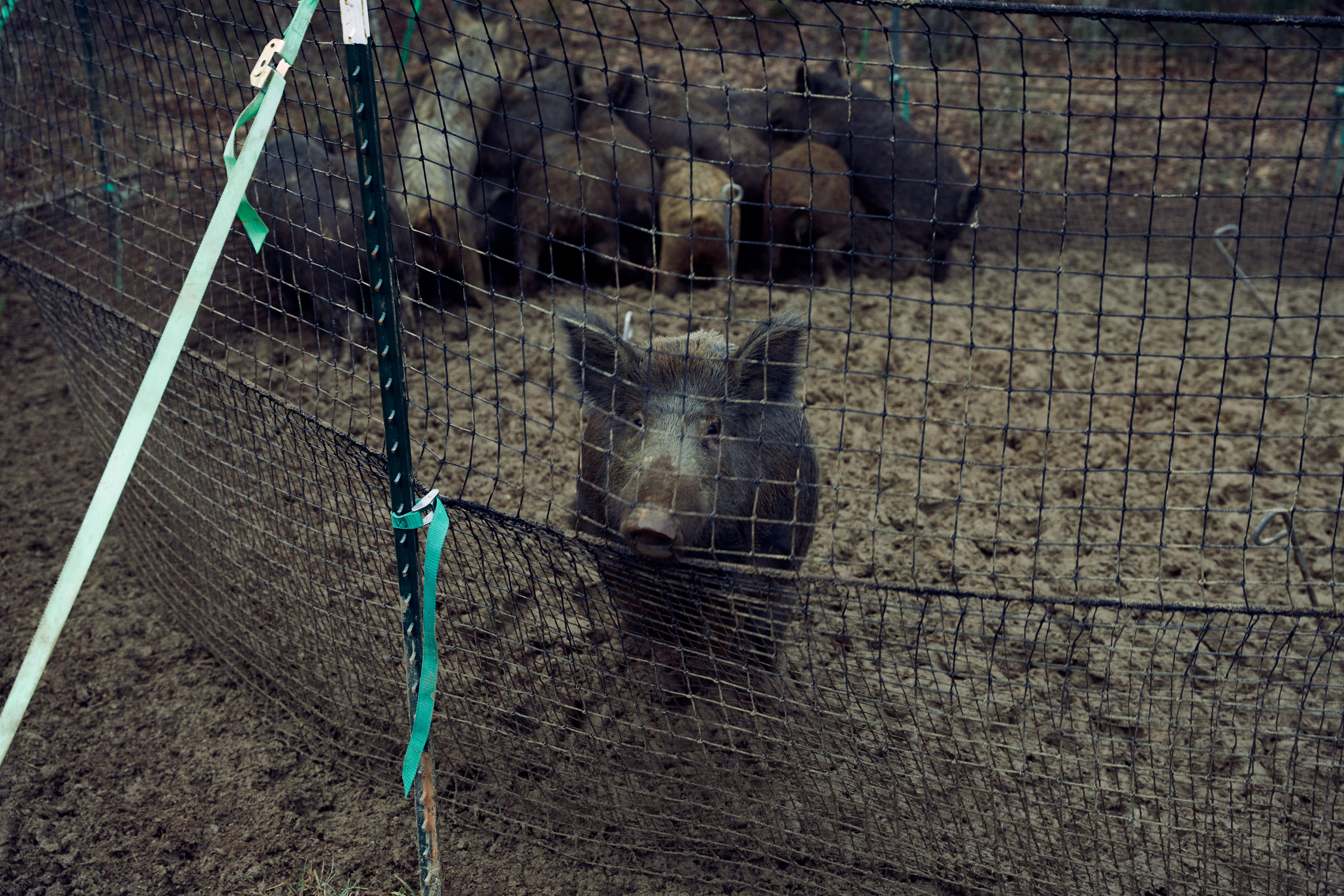A Farmer’s Tale: Catch the Whole Sounder

It’s early in the season. You’ve labored long and hard to get your crop in the ground. You go out to the fields and check on the progress, but what you find is gut-wrenching.
The field is dug up and your burgeoning crops have been eaten by feral hogs. All that money and time is lost. Your livelihood is threatened. You can’t turn back time, it’s too late to replant. Farming can be cruel because the bills will come due, even if your crop does not.
You’ve dealt with setbacks before. From pests to drought to hell and high water, you’ve seen it all. But seeing your land laid low never gets any easier.
James M., a farmer in South Carolina saw firsthand how wild hogs destroy crops: “Two years ago I started getting pig damage to my food plots which went from a little to a lot in only one year.”
If you’re like James M., the first time you get hit by feral hogs, you go for your gun. Set up some trail cameras, find out where they are bedding down, and then get your dogs and some friends to hunt them down.
Sure, you kill a few, but a few is just not enough.
James M. learned pretty quickly that you can’t kill enough pigs if you’re shooting ‘em one by one: “You can't shoot enough pigs to solve the problem, in fact it makes it worse as they just avoid an area during daylight.”
To truly protect your land and livelihood, you have to eliminate them all.
The only effective way to stop feral hogs is to eliminate the whole sounder.
The Problem with Feral Hogs
If only there is one problem. The truth is there are four very big problems that make feral hogs a huge threat to farmers.
- There are a lot of them. In the U.S. alone, there are an estimated five million feral hogs ravaging the land and destroying natural resources. It’s a major ecological issue, and we’re here to help you solve it.
- Feral hogs are rooting and eating machines. What they do not eat, they destroy.
-
Feral hogs are, how should we say it…amorous. Apparently, there is ONE THING they like more than food. With a gestation cycle of under four months, feral hog females can have two litters each year with an average of six piglets per litter. They can quite literally reproduce faster than you can hunt them.
-
They are smart. Feral hogs learn to avoid traps quickly, and even if you manage to trap some, the rest of the sounder can scatter and take their destructive activities to other parts of your land.

Stopping an Invasive Species
Introduced to the United States during the 1500s, feral hogs have done what many other invasive species do, they take over. If you’re in the South, think Kudzu in Alabama or pythons in Florida, they get everywhere and reproduce like large, mean rabbits.
With no natural predators in the U.S., feral hogs ravage resources and become a danger to humans (through disease), wildlife (by consuming valuable resources) and your livelihood (by damaging your crops and killing juvenile livestock).
We’ve heard and lived the stories—wild boars eating crops, destroying hunting grounds, killing baby goats, polluting groundwater and creek systems—and so many more.
Helping you protect your land, livestock and livelihood is why we do what we do.
How to Stop Feral Hogs
It’s not about simply catching a couple of pigs in an effort to run them off of your land. Our field research has proven that if you do not catch them all, they will most often return. The only thing worse than waking up to a ravaged field is waking up to a ravaged field AGAIN.
Hunting them doesn’t easily eliminate the whole problem because of how quickly they naturally multiply. If you kill them one by one, you’ll be able to get two or even half a dozen, the pigs will just keep breeding and coming back.
There are a lot of traps out there. They range from homemade box traps to elaborate gated corral traps that are big, complex and expensive.
But, big and complex also has many disadvantages. For some traps, you have to stay up all night, watch the cameras (if you have a good cell signal), and spring the trap at just the right moment to catch as many feral pigs as you can at one time.
This is why we developed the Pig Brig Trap.
Instead of heavy, unnatural-looking metal walls, loud, clumsy gates, and dependence on complex and finicky technology, The Pig Brig Trap relies only on a pig’s instincts to catch them all.

How Does the Pig Brig Trap Catch the Whole Sounder?
While corral trap makers promise to be “multi-catch” systems, The Pig Brig Trap is the only “continuous trap” system available. You set it, condition pigs to it, and then it keeps on trapping all night long.
That’s how James M., our farmer in South Carolina, went from shooting a few to catching whole sounders at a time: “Bought my Pig Brig and followed the great advice. Within a short time, the first sounder of 17 pigs was gone. Getting ready to address sounder number two!”
Pigs have a rooting instinct, and they root under the netting to get to the feed. Because the netting looks natural and there are no loud gates to startle them, the pigs just keep coming in.
Once inside the trap, the pigs can’t root their way out. Because they’re in an area with food, they don’t want to get out. Even if they did, the double-walled, 8,000 ft-lb dynamic drop test netting ensures they can’t. Most farmers report that when they return to the trap in the morning, the pigs are just lying down, unphased, and unaware of what will happen next.
If you’re asking yourself what rooting is, it’s the behavior that causes wild hogs to dig into the ground and look for food. The same behavior that led them to destroy your crops is the same behavior that will lead to their demise.
It’s not an uncommon dilemma and we’ve seen it time and time again. And we’ve also seen the success of farmers who’ve managed to catch the whole sounder and protect their crops.
James M. liked his Pig Brig so much, he reached out to us to say: "Absolutely a great product! Works perfectly!” and sent us a cool video along with his review.
 FINANCING AVAILABLE
FINANCING AVAILABLE



